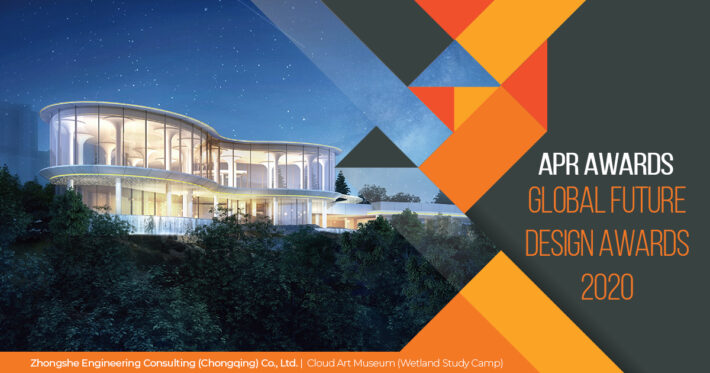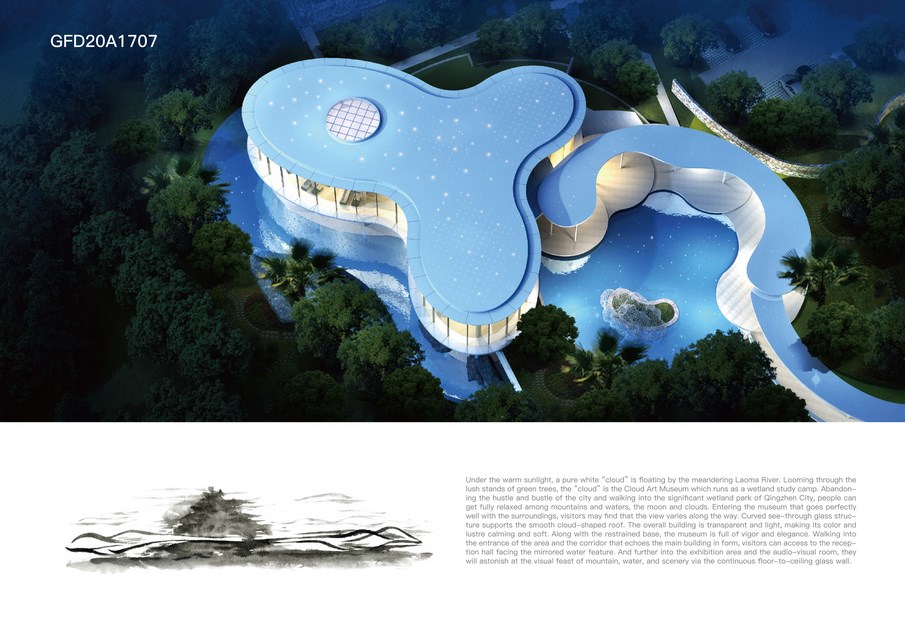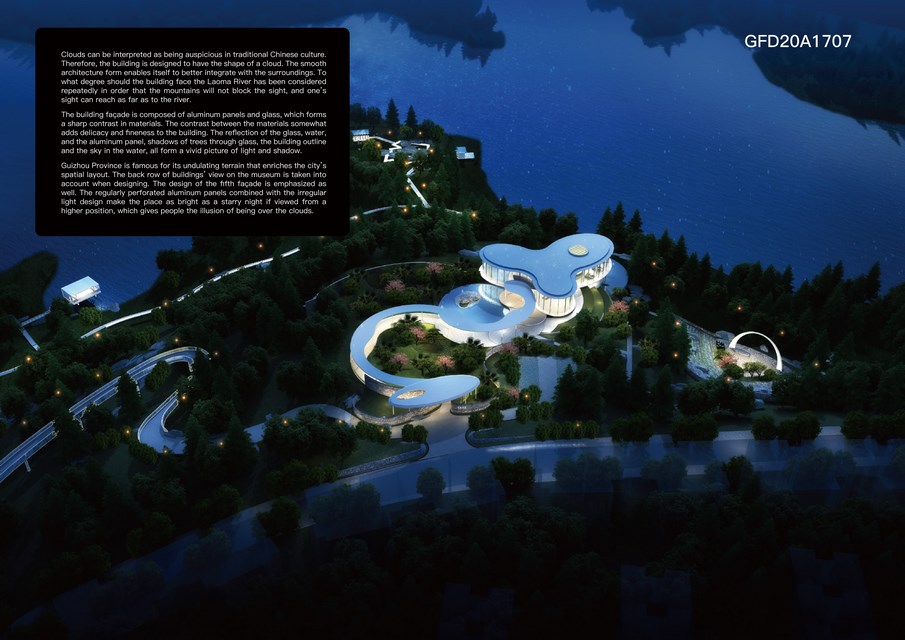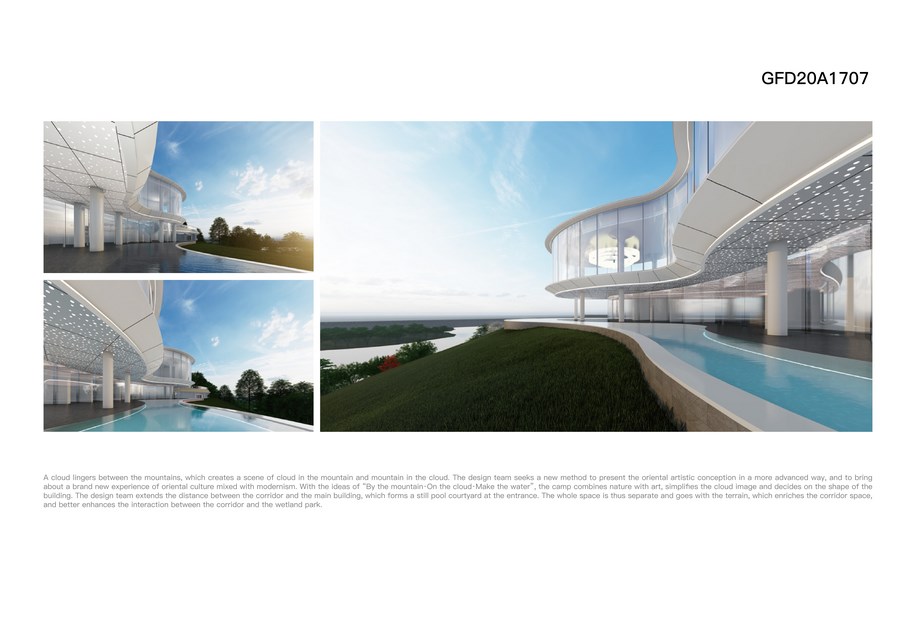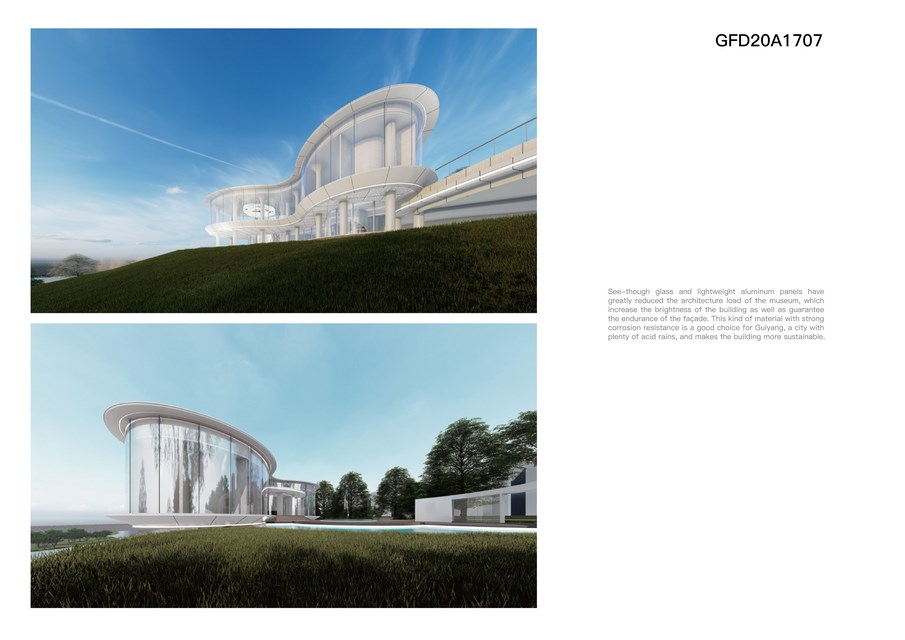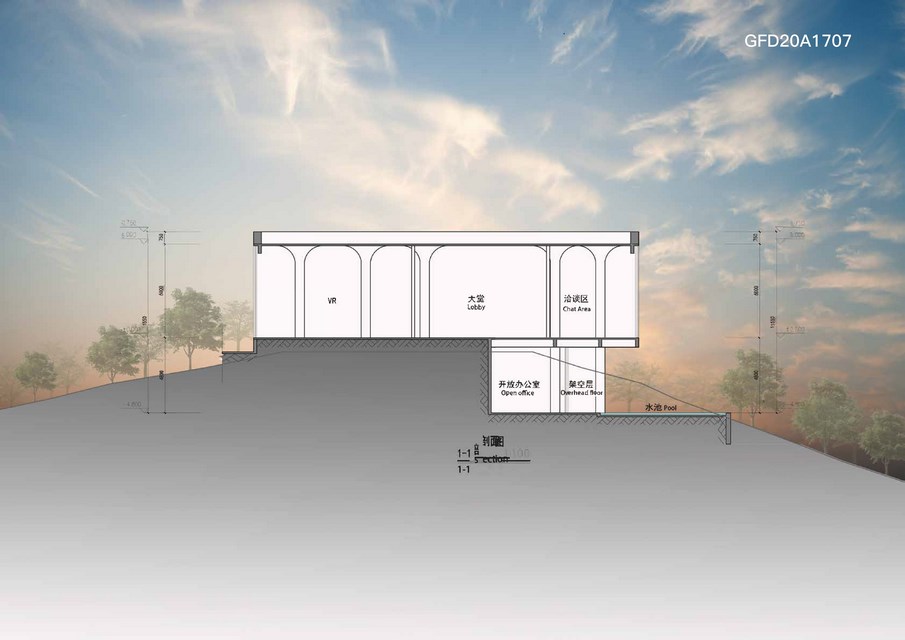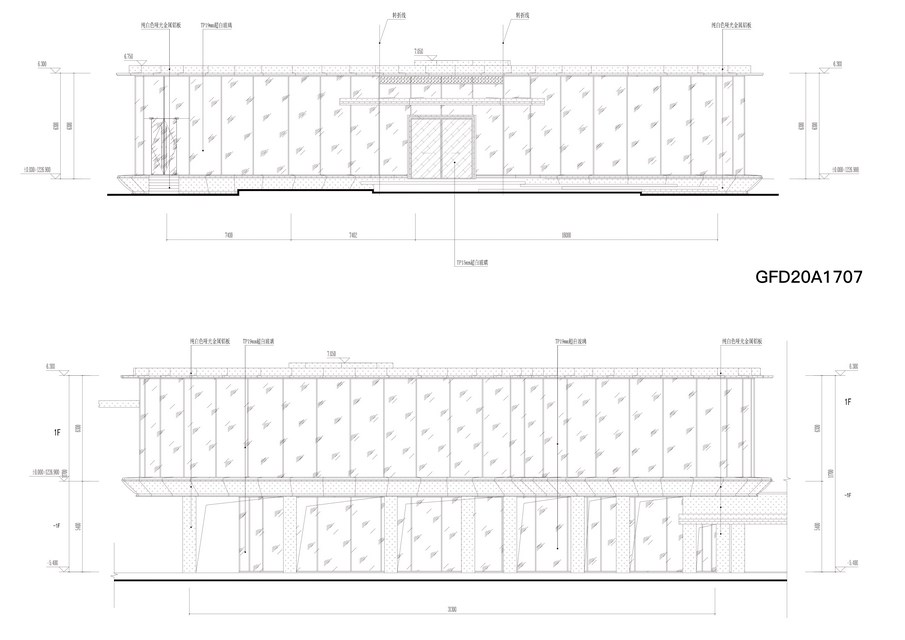Under the warm sunlight, a pure white “cloud” is floating by the meandering Laoma River. Looming through the lush stands of green trees, the “cloud” is the Cloud Art Museum which runs as a wetland study camp. Abandoning the hustle and bustle of the city and walking into the significant wetland park of Qingzhen City, people can get fully relaxed among mountains and waters, the moon and clouds. Entering the museum that goes perfectly well with the surroundings, visitors may find that the view varies along the way. Curved see-through glass structure supports the smooth cloud-shaped roof. The overall building is transparent and light, making its color and lustre calming and soft. Along with the restrained base, the museum is full of vigor and elegance. Walking into the entrance of the area and the corridor that echoes the main building in form, visitors can access to the reception hall facing the mirrored water feature. And further into the exhibition area and the audio-visual room, they will astonish at the visual feast of mountain, water, and scenery via the continuous floor-to-ceiling glass wall.
Winner- Global Future Design Awards 2020
Firm | Zhongshe Engineering Consulting (Chongqing) Co., Ltd.
Architect/Designer | Chen Xiao
Category | Cultural Concept
Team | Chen Xiao, Ren Xiaoya, Wu Liang, Du Qifeng, Wang Minggang, Dan Wei, Zhu Na, Yu Kan, Liu Peiling, Hu Xing, Li Xuehuan, Tang Xiaoqiang, Zhou Xin, Wang Xudong
Country | China
Photographer/Copyright | ©Wu Liang
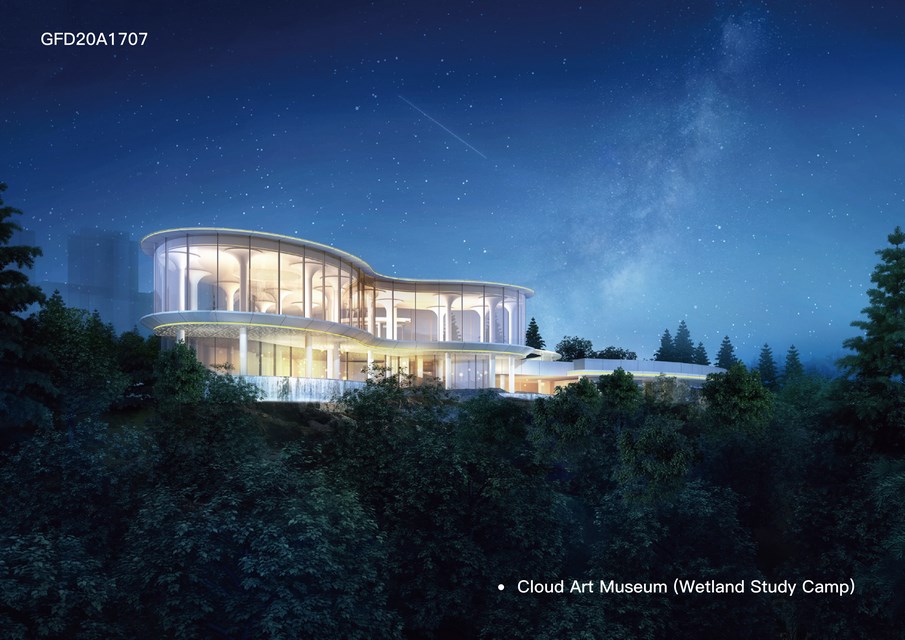
With the ideas of “By the mountain·On the cloud·Make the water”, the camp combines nature with art, simplifies the cloud image and decides on the shape of the building. The design team extends the distance between the corridor and the main building, which forms a still pool courtyard at the entrance. The whole space is thus separate and goes with the terrain, which enriches the corridor space, and better enhances the interaction between the corridor and the wetland park.
The building façade is composed of aluminum panels and glass, which forms a sharp contrast in materials. The contrast between the materials somewhat adds delicacy and fineness to the building. The reflection of the glass, water, and the aluminum panel, shadows of trees through glass, the building outline and the sky in the water, all form a vivid picture of light and shadow.
Guizhou Province is famous for its undulating terrain that enriches the city’s spatial layout. The back row of buildings’ view on the museum is taken into account when designing. The design of the fifth façade is emphasized as well. The regularly perforated aluminum panels combined with the irregular light design make the place as bright as a starry night if viewed from a higher position, which gives people the illusion of being over the clouds.
The museum is divided into two sections: the reception hall in the front and the camp, also the main part. The reception hall resorts to a streamlined overhead corridor, which guides visitors to the camp through mountains and waters. The camp sits in the mountain and looks lightweight due to changes of materials. It looks exactly like a cloud in the mountain if viewed from the river. The simple and soft streamlined shape increases the inclusiveness of the building. For instance, the pure white cloud is not aggressive, which makes it possible for future development around the area.


